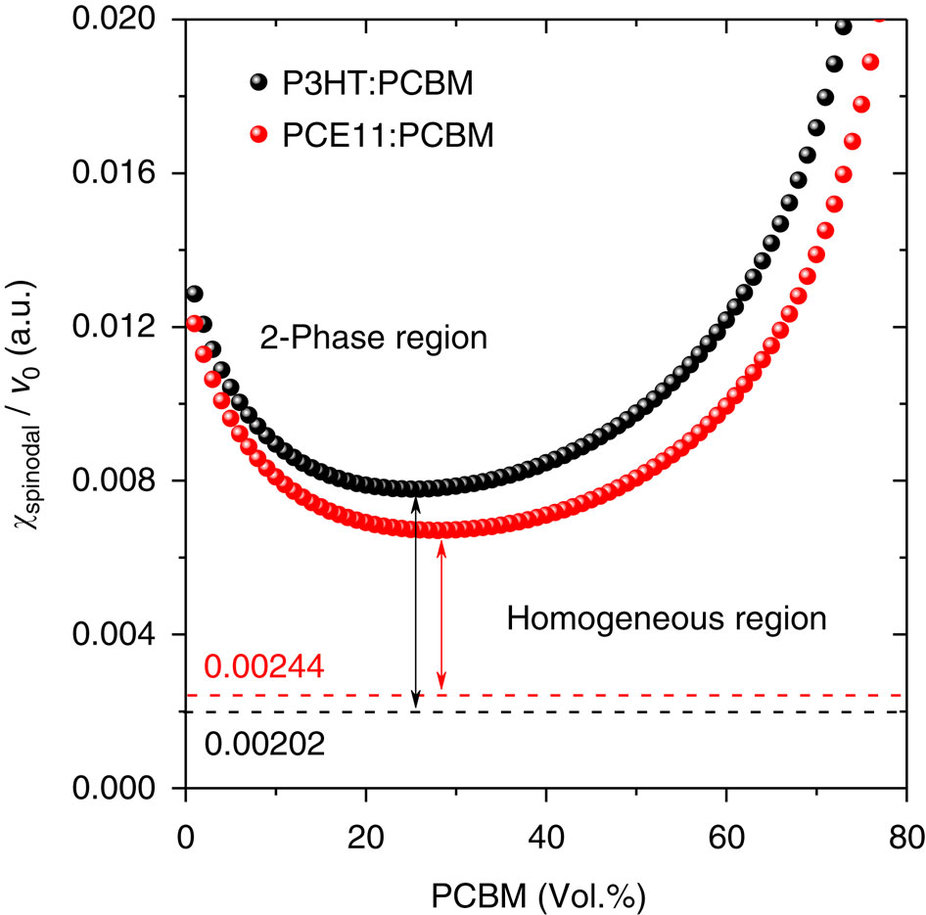Mechanism behind the abnormally strong burn-in degradation in high performance bulk heterojunction solar cells revealed
In our recent manuscript in Nature Communications we could identify the physics behind the abnormally strong burn-in degradation frequently observed in high performance organic solar cells. In cooperation with the chair for crystallography and structure physics (Prof. Tobias Unruh), Ning could identify spinodal demixing in the amorphous polymer – fullerene phase as the origin for a fast microstructural degradation leading to rapid photocurrent losses. In a broader context, we identified the interaction parameter between the polymer and the fullerene as the decisive material property determining the thermodynamic stability of the microstructure. This opens up the fascinating opportunity to develop computational simulation tools allowing to predict the stability of microstructures at the hand of the components’ SMILES strings.
Abstract:
The performance of organic solar cells is determined by the delicate, meticulously optimized bulk-heterojunction microstructure, which consists of finely mixed and relatively separated donor/acceptor regions. Here we demonstrate an abnormal strong burn-in degradation in highly efficient polymer solar cells caused by spinodal demixing of the donor and acceptor phases, which dramatically reduces charge generation and can be attributed to the inherently low miscibility of both materials. Even though the microstructure can be kinetically tuned for achieving high-performance, the inherently low miscibility of donor and acceptor leads to spontaneous phase separation in the solid state, even at room temperature and in the dark. A theoretical calculation of the molecular parameters and construction of the spinodal phase diagrams highlight molecular incompatibilities between the donor and acceptor as a dominant mechanism for burn-in degradation, which is to date the major short-time loss reducing the
performance and stability of organic solar cells.

